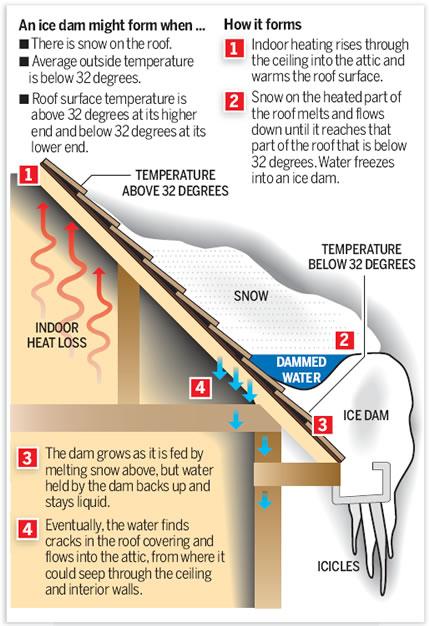When it comes to residential construction your roof is a visible part of the structure.
Roof slope snow runoff.
A 4 12 pitch being 4 inches of vertical rise over one foot or 12 inches of horizontal run.
An example for a steep sloped roof is 8 12.
Degrees to pitch rise in run table.
A small roof with a shorter length on the other hand will not collect a lot of water within a short period of time and will work just fine with the minimum roof slope for drainage.
Roof slope equivalents as rise.
The minimum roof pitch for shedding snow is around 30 or a 6 12 or 7 12 slope although this is not a definite as the material of your roof the direction of the snow and wind are some factors that can affect whether or not snow will slide as roofs of as little as 10 have been reported to shed snow.
At these slopes snow creeps rather than slides and is easy to manage.
There are advantages and disadvantages to having a steep pitch versus a shallow or low pitch the most obvious of which is the roof s ability to shed or withstand heavy snow rain or wind.
Roof slopes lower than 4 12 tend to perform well with metal roofs which are less prone to leakage and ice dam formation.
In roofing it is expressed in inches of vertical rise over inches of horizontal run.
Generally such roofs have a pitch ranging from 1 2 12 to 2 12.
Roofs of any slope that constrain runoff i e any roof where the drainage system is impeded by parapets or any other physical obstructions capable of accumulating more than 1 inch of standing water on any part of the roof when the primary or the secondary drains or scuppers means of drainage is blocked by debris snow or ice.
A wide roof with a steep slope will lead to faster runoff hence necessitating a slightly steeper slope for effective discharge of the rain water.
Complete list of roofing types.
This means that the rise of the slope goes up or down 8 inches for every 12 inches.
The slope of a roof or pitch is determined by how many inches the roof rises over 1 foot or 12 inches.
Flat roofs which aren t perfectly flat require a small slope to allow for water runoff.
Steeper slopes are ideal for areas that have higher snow loads and will also prevent the possibility of ponding water on the roof.
Low pitched roofs are generally difficult to maintain and you need special materials to prevent leaks.
To put it in perspective the angle of this slope would be around 30 degrees.
On roof slopes between 4 12 and 6 12 rough textured roofing materials work best.

